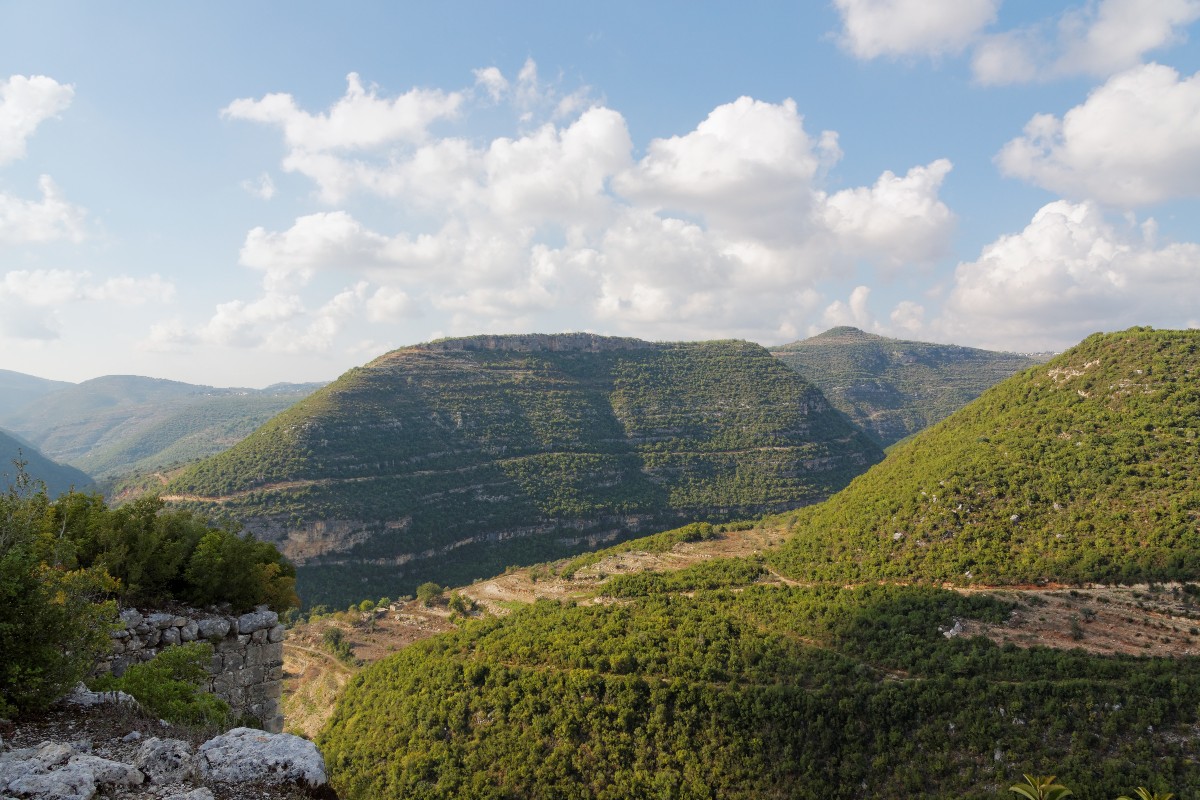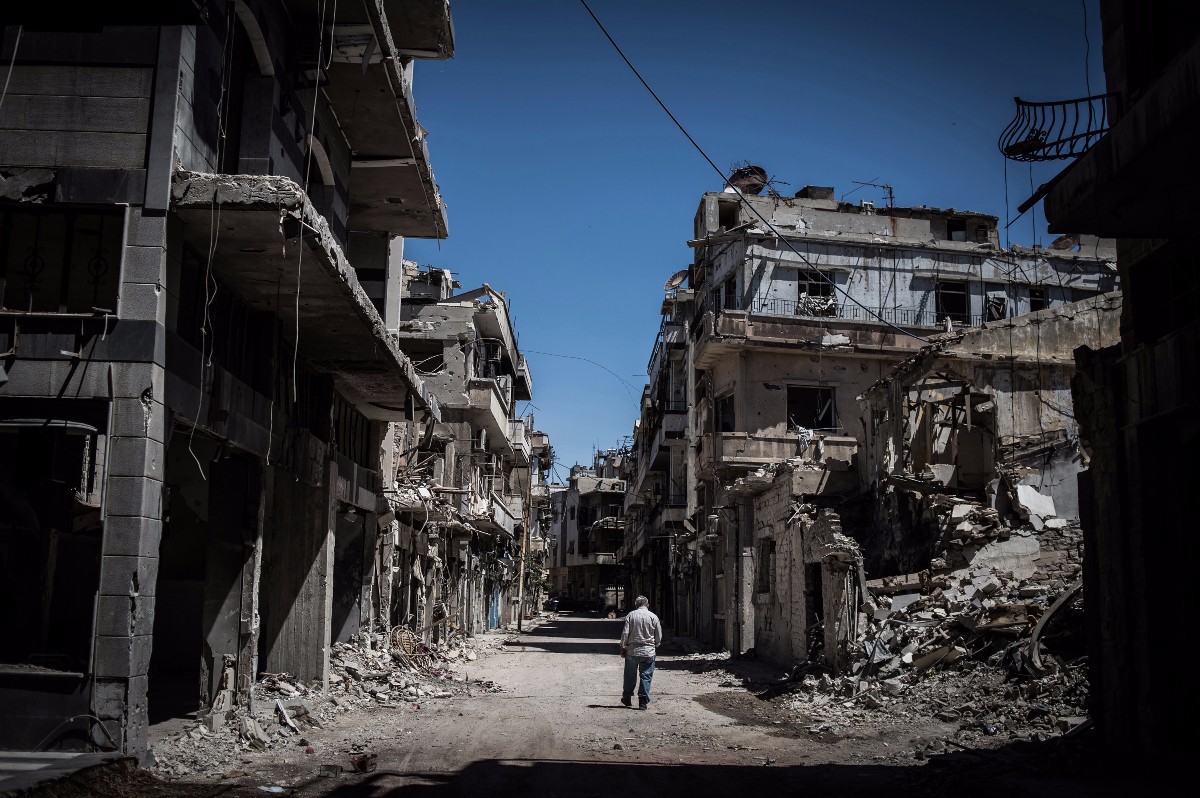 View of the Al-Ansariyah Mountains in Western Syria (NeferTiyi / Flickr)
View of the Al-Ansariyah Mountains in Western Syria (NeferTiyi / Flickr)
Out of Rubble: A Sustainable Future for Syria?
After almost six years of one of the deadliest conflicts of the 21st century, Syria is in shambles. Damages to Syrian cities are now estimated to have reached around US $7.3 billion, with the housing and energy sectors hit hardest. Aleppo alone accounts for roughly 40 percent of the total damage. While the damage is still piling on every day, there will come a time when the violence has ebbed, the country has stabilized, and the focus must turn to post-war reconstruction efforts. ASP’s White Paper on Syrian Stabilization and Reconstruction highlights the most important aspects of what such efforts would look like.
The World Bank Group has stressed that reconstruction efforts will be the “reviving force of Syria’s post-war economy.” A new fund could ensure that when the time comes for reconstruction after the war, building materials and resources will be manufactured from within the Syrian economy, in order to create jobs and stimulate the war-ravaged economy. When thinking of future reconstruction efforts in Syria, governments and private investors should heavily consider the importance of not only rebuilding what was present before the war, but incorporating sustainable technologies and urban planning into a reconstructed Syria.

A Syrian refugee walks among severely damaged buildings in downtown Homs, Syria, on June 3, 2014. (Xinhua/Pan Chaoyue)
Syria and its decimated city centers are in crumbling ruins and are a part of a deeply damaged and unsustainable nexus of food, water, and energy systems. Aleppo, Homs, and Hama are located in one of the water poorest regions on earth, where the agricultural, domestic, and industrial water sectors scored highly in baseline water stress measures, even before the war. On top of it all, the war has left a toxic footprint behind, making food production and agriculture difficult to sustain, and a lack of waste management in many Syrian cities poses ever higher public health risks.
Incorporating sustainable technologies and urban planning into reconstruction efforts can ensure long term viability and more resilience for a region already heavily affected by climate change. Cities of the Middle East are global security hotspots, the international community can reduce security risks by reconstructing Syria’s cities with key innovations in sustainable technologies such as rainwater harvesting, green buildings, bottom up renewable energy ownership (solar panel, bio-fuels, and wind energy), and sustainable urban transportation. Cities now in ruins, like Aleppo, can have the potential to lead the region out of a period of war and poverty, where terrorism and autocracy can no longer capitalize on a low quality of life.
While Syria has suffered (and continues to suffer) one of the most serious humanitarian catastrophes in recent history, it is not the only country in history to experience such extensive damages to urban centers, energy, agricultural, and water sectors. In WWII, 18 major German cities were destroyed by more than 50 percent, including Frankfurt, Cologne, Hamburg, and Dresden. It is no surprise that pictures of post war Berlin are frequently mistaken for pictures of current-day Aleppo. With the assistance of the Marshall Plan and other international reconstruction efforts, Germany was rebuilt, and now leads the European Union in renewable energy output and is a champion of sustainable urban development.
Most apparently, the process of modernization and eventual sustainable development in Germany took more than half a century. Despite limits to technology, crippling WWII reparations, and brain/labor drains, Germany became the Wirtschaftswunder of the 20th century. This was due in large part to the international community’s vested interests in preventing a communist takeover of West Germany, manifesting itself in the successful Marshall Plan. To this date, Germany remains a leader of the European Union and the free world.
A destabilized and destroyed Syria is an absolute risk to global security and undermines the global fight against terrorism and for democracy. A rapid and sustainable rise of Syria from the ashes of this war then must too be considered a vested interest for the United States and the international community. While there are indisputable differences between the two cases, Germany’s rapid success despite immense political and financial challenges indicates that Syria can indeed rise from the ashes and lead the Middle East, and sustainable reconstruction can make this rise all the more rapid, and long-lasting.
Syria presents an immense challenge for the humanitarian, international development, security, and energy sectors. Ensuring that Syria’s post-war reconstruction incorporates sustainable urban development technologies and techniques can not only reduce the immensity of these challenges, but empower Syria for a better, more sustainable, and self-reliant future, ready to confront the rapidly approaching consequences of climate change and regional instability. It is time to start thinking about sustainable reconstruction.






